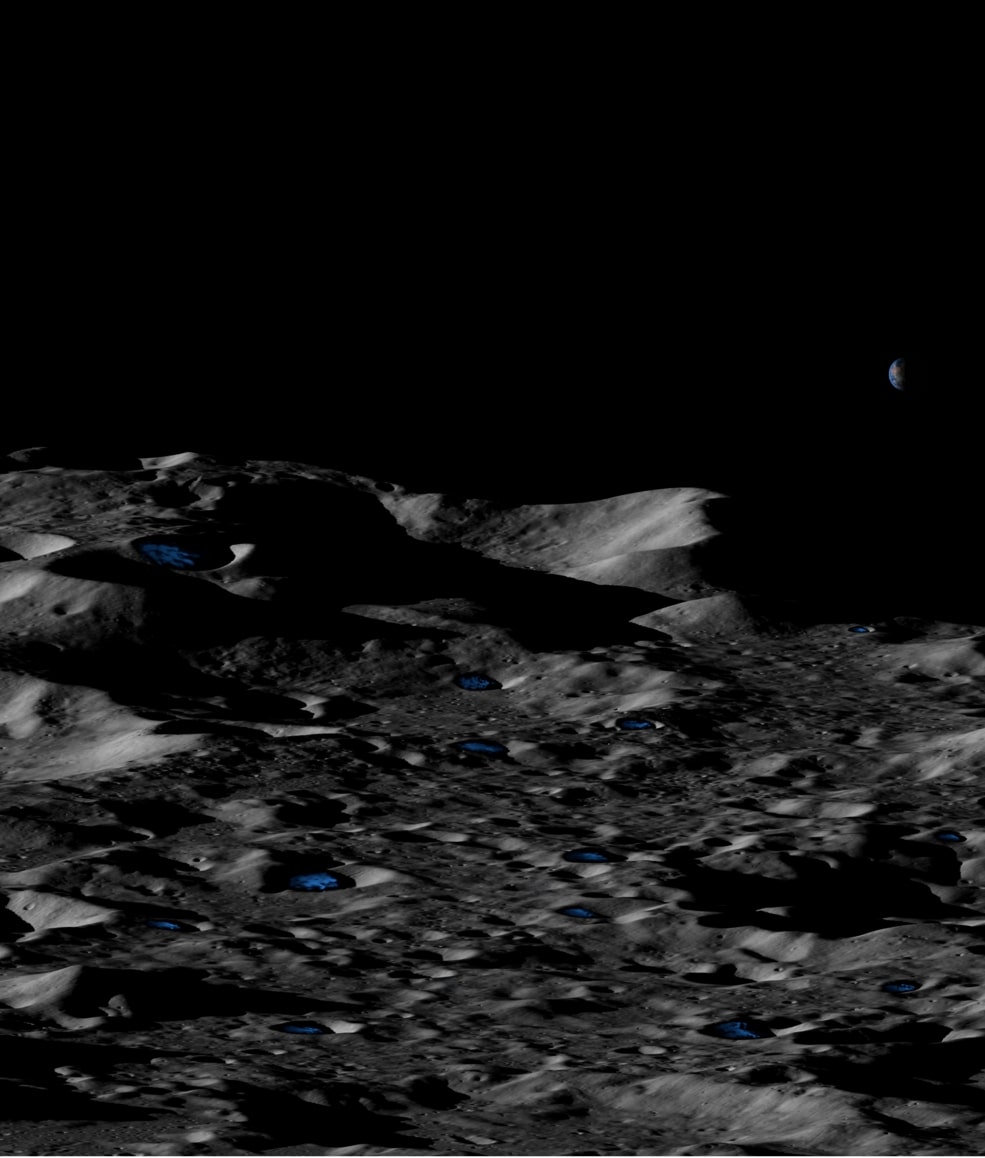
A new study suggests that there could be thick deposits of frozen water on the moon, located in craters near the lunar pole.
Discovering potential frozen water on the moon is not only of scientific interest. It could also be important for future lunar exploration, providing a water source for astronauts who stay on the moon for an extended period. As transporting supplies from Earth on a rocket requires a huge amount of fuel, finding an off-planet water source could enable longer missions and more efficient launches.
The findings on the moon are based on findings on Mercury. The planet and the moon share a similarly scarred surface caused by impacts from asteroids, creating many craters. And both the moon and Mercury spin in such a way that the Sun never rises high over the horizon over the poles, making these regions exceptionally cold. Some areas of the poles, like impact craters, are permanently in shadow and thus stay cold enough for ice to be preserved there indefinitely.
The observations of Mercury were made using MESSENGER, the MErcury Surface, Space ENvironment, GEochemistry and Ranging spacecraft, and the moon observations were made using LRO, the Lunar Reconnaissance Orbiter. Scientists used elevation data to determine the location and depth of craters, showing that the craters were up to 10% shallower near the poles, suggesting they could contain ice. This was supported by findings that the craters were shallower on their sides which faced the pole rather than the sides which faced the equator, which is what would happen if ice were exposed to less sunlight on the pole-facing side.
Using radar, scientists have searched for ice on the moon before but have only discovered small, shallow deposits. By contrast, on Mercury, they have discovered thick ice deposits. “We showed Mercury’s polar deposits to be dominantly composed of water ice and extensively distributed in both Mercury’s north and south polar regions,” Nancy Chabot, instrument scientist for MESSENGER’s Mercury Dual Imaging System at the Johns Hopkins Applied Physics Laboratory, said in a statement. “Mercury’s ice deposits appear to be much less patchy than those on the Moon, and relatively fresh, perhaps emplaced or refreshed within the last tens of millions of years.”
The findings are published in the journal Nature Geoscience.
Editors' Recommendations
- NASA’s new moon rocket to depart launchpad after failed test
- Rocket heading for moon impact may not be SpaceX’s after all
- NASA says ‘moon wobble’ may cause a problem for Earthlings
- Scientists hail first unambiguous detection of water on the moon
- Radiation levels on the moon are 200 times the levels on Earth, study shows




